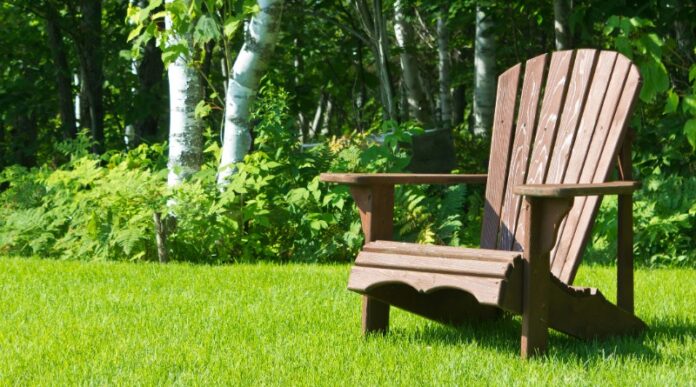Turf grass is a vigorous population of plants living both above and below ground. Above-ground grasses offer green space. Below ground, grass roots build and sustain soil. Sustainability practices to avoid stress in summer months include irrigation, fertilization and mowing practices.
Irrigation
Appropriate irrigation depends on soil type. Soil types in our region are extreme, with heavy clay in areas, sand in others. Clay soils hold water longer, and can be watered slowly and less frequently. Sandy soils don’t hold water long, and need to be watered lightly and frequently.
Irrigation conservation can be increased by deep and infrequent watering. Deeper, less frequent irrigation encourages deeper root growth. Reduced irrigation requirements can also be accomplished by raising mowing height, reducing mowing frequency and selecting a hardier, deeper-rooting variety of grass.
RELATED: Plant Doctor—Selecting Plants for Troubled Soils
Fertilization
Turf grass fertilization is vitally important for everyone who manages and maintains a grassy area. Essential and nonessential nutrients work together for optimal plant performance.
Nitrogen, phosphorus and potassium are three essential nutrients needed for plant life.
- Nitrogen (N) is taken up by plants primarily in the form of ammonium nitrate. It offers a green flush and quick growth to the plant. It also aids in photosynthesis and allows the plant to turn food into energy
- Phosphorus (P) stimulates early root growth, and helps in photosynthesis and turning sunlight into energy.
- Potassium (K) helps with disease resistance and plant growth, and transforming starches into energy.
Important micronutrients for grass are magnesium (Mg), which influences the uptake of nutrients and helps move carbohydrate energy throughout the plant. Iron (Fe) carries oxygen and gives plants strength. Sulfur (S) promotes plant growth, while calcium (Ca) protects plants from toxic substances.
Mowing
Mowing turf grass is the most fundamental and necessary maintenance practice. Some points to consider when mowing grass:
- Cut no more than one-third of leaf height at each mowing.
- Raise mowing height before summer and winter stress. Mowing height can be lowered during favorable growth periods.
- Alternate direction and pattern.
Keep in mind that mowing frequency increases as height decreases—a shorter cut requires more frequent mowing.
Stress-free lawn, stress-free landscaper
According to research from the University of Queensland School of Biomedical Science, the smell of fresh-cut grass reduces stress and protects nerve cells from stress damage. The smell of fresh-cut grass is also linked to fond memories.
Mowing with a push mower also burns calories and is a great way to enjoy the outdoors and exercise.
Turf grass plants are simple and resilient. When proper steps are taken to sustain grass throughout the stressful times of the year, plants will thrive in all seasons.








